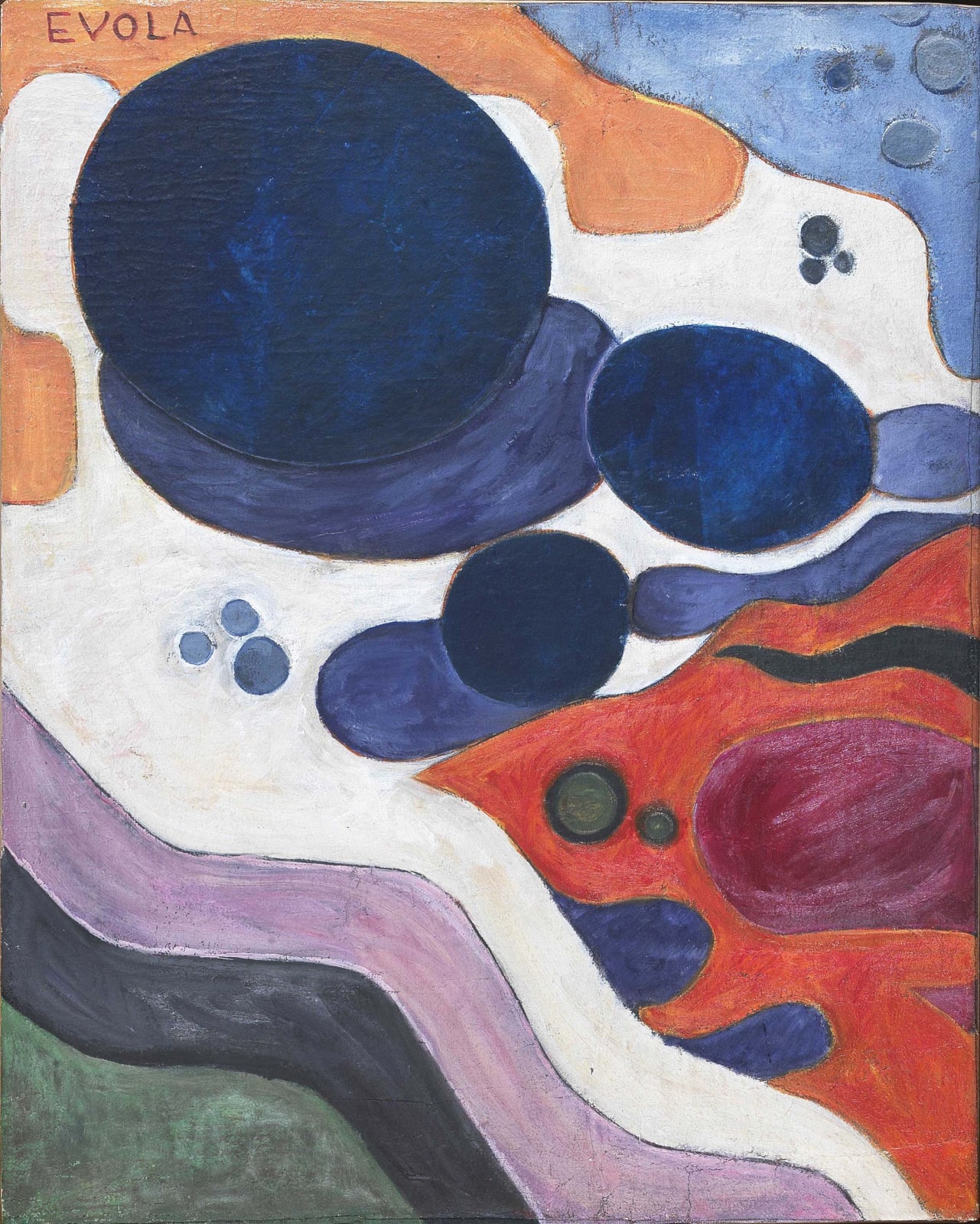-
Artworks

Julius EVOLA ROME 1898-1974
The Univers of Heroes, 1920 ca.Oil on canvascm. 50 x 40Signed higher left: EVOLA | On the verso: Julius Evola l’universo degli eroi (progetto)SOLD
Julius Evola was born in Rome in 1898 and when he was just seventeen years old he approached the avant-garde art, becoming a disciple of futurist movement and starting his artistic career in Balla’s atelier.
In this first phase he supported Marinetti’s ideals, but Roman futurism, whose exponents met at Bragaglia brothers’ Casa d’Arte, was oriented towards an approach more spiritualist than Milanese futurism’s approach. His first works expressed this particular interpretation that drew him close movement’s “mystic” trend, represented by Ginna and Corra, two artists who had a spiritualist vision, almost making an artistic translation of Blawatsky’s and Steiner’s theosofical and antroposophical teachings. In the years to come, these suggestions made Evola to take an alchemical and magical direction.
Immediately after the First World War, his differences of opinion from Marinetti became deep from the artistic and political point of view, so Evola broke with futurism starting his collaboration with Dadaism.
It is the beginning of the second phase of Evola’s painting, that lasted the three-year period 1918-1921. During the twenties he was present at several events: in 1920 a one man exhibition in Rome at Bragaglia’s Casa d’Arte, in 1921 the exhibition at the famous gallery “Der Sturm”, in the same year the International Fair of avant-garde art in Geneva and the Exposition International Salon Dada in Paris in 1922. Moreover he wrote poems, essays and articles for many avant-garde magazines, such as “Noi” founded by Prampolini in 1917, “Blue” founded in 1920, “Dadaphone” edited by Tzara, Evola met in 1919 at Bragaglia’s Casa d’arte thanks to Prampolini.
Evola’s interpretation of Dadaist art showed deep traces of the discussion about metaphysics and esotericism in spiritualists Roman circles he attended. He tought Dadaism was a more noble kind of art, since its focus was on an inner dimension, whereas futurism’s focus was mainly on an outward dimension. In 1921, after an existential crisis that led Evola to consider suicide, he gave up artistic activity, to paint only sporadically during the sixties, making almost exclusively reproductions of his past works.
Some of Evola’s works had a prevailing alchemical subject. In this artistic phase any kind of figurative elements was lacking; his paintings depicted abstract forms with evident symbolic allusions and a deep colour impact, a characteristic common to futurist period works.
The Universe of Heroes is connected to a series of oils, dated 1919 and 1920, representing the foundamental phase of alchemical opus; in particolar, the oil on cardboard called Composition no.19, “the first work where alchemy is clearly the subject of representation; where painting emphasizes and creates parallelisms with Noble Art”[1].
Both in The Universe of Heroes and in Composition we find the three colours of the three basic alchemical stages: black for the stage called “Nigredo”, white for the stage “Albedo” and red for “Rubedo”.
There is a reproduction of this painting, that Evola executed around 1921 on the wood top of a table (today at Fondazione Evola in Rome)[2]. Having the writing project in brackets on the verso, the painting was realized before the table, presumably not long before 1921.
[1] E. Valento, Julius Evola’s letters to Tristan Tzara, Rome, 1991, p.20
[2] Cf. E. Crispolti, Futurism 1909 – 1944, Milan, publ Mazzotta, 2001, p. 446
Join the mailing list
Subscribe to our newsletter to receive all the news about exhibitions, fairs and new acquisitions!
